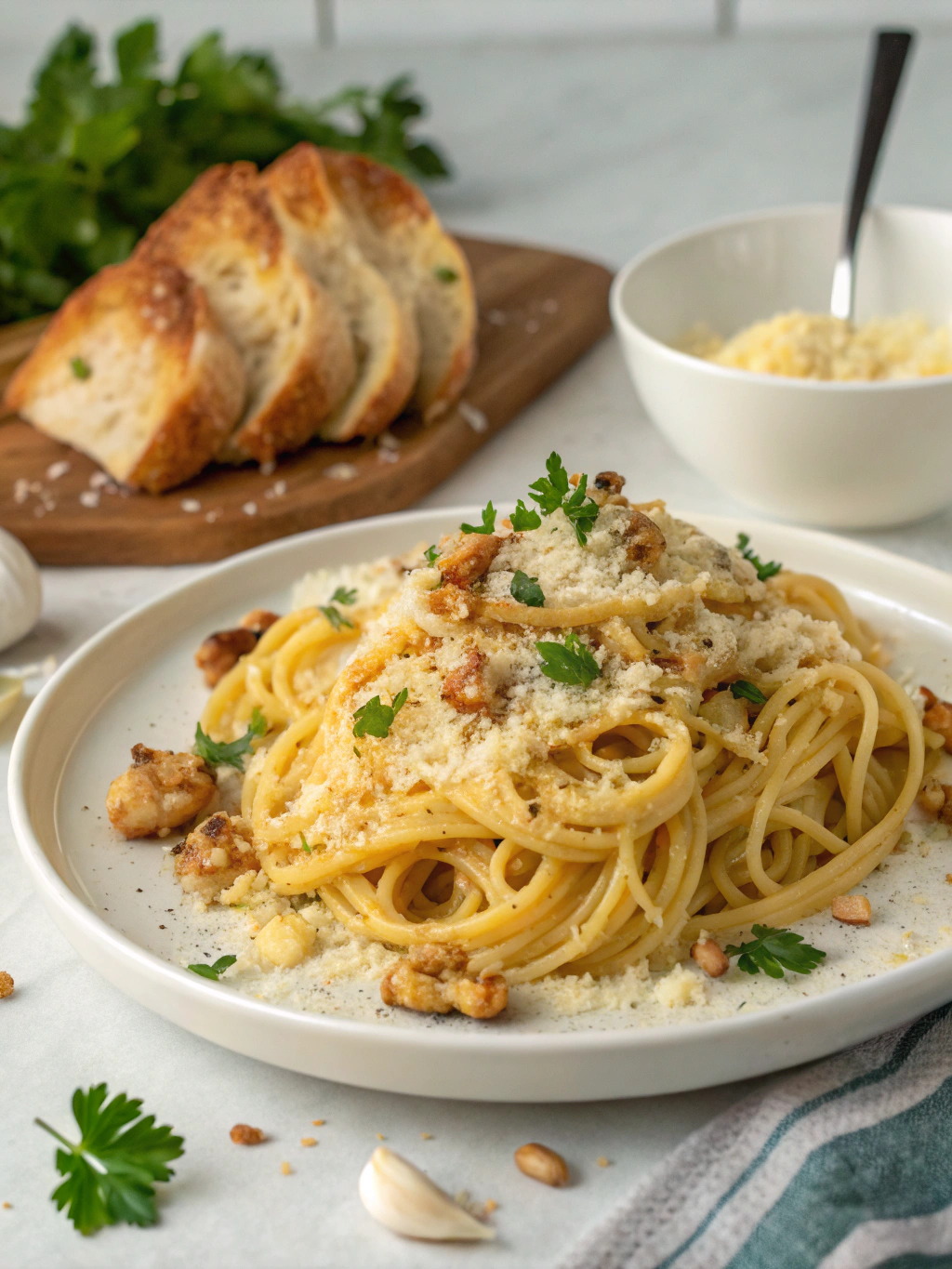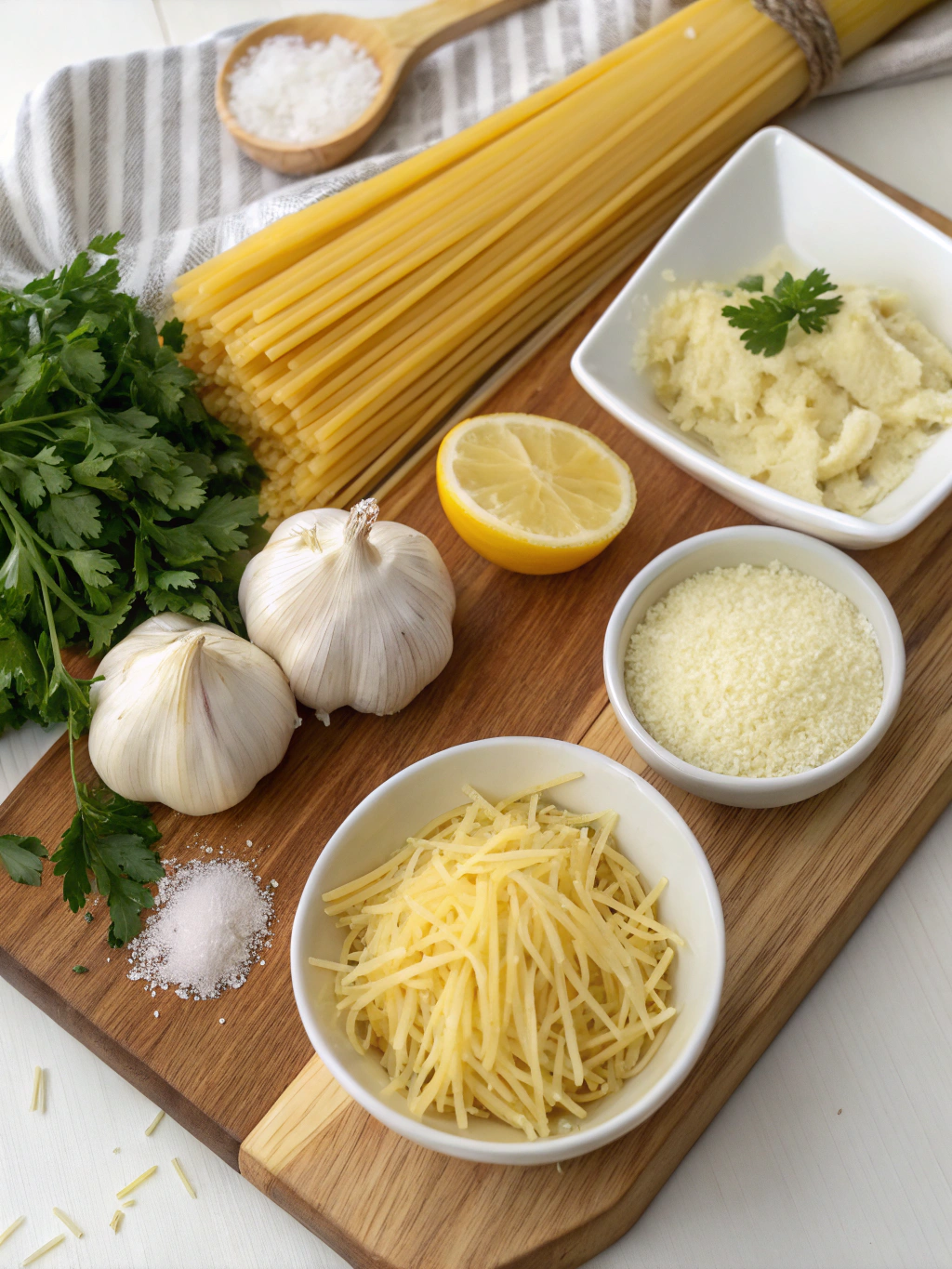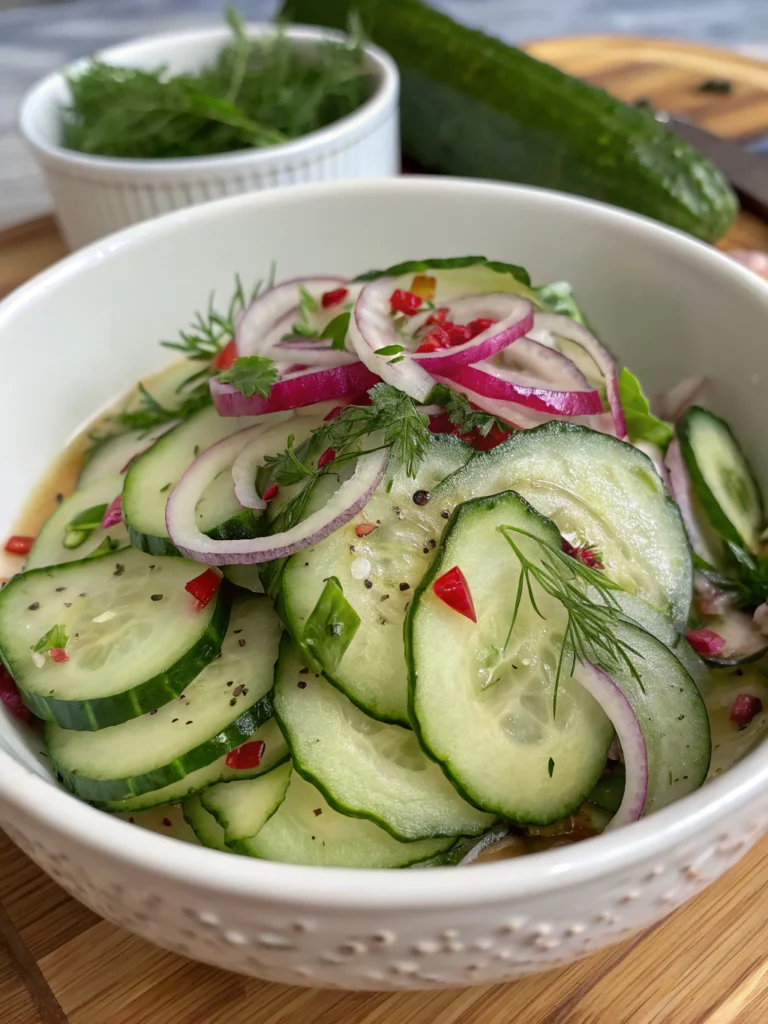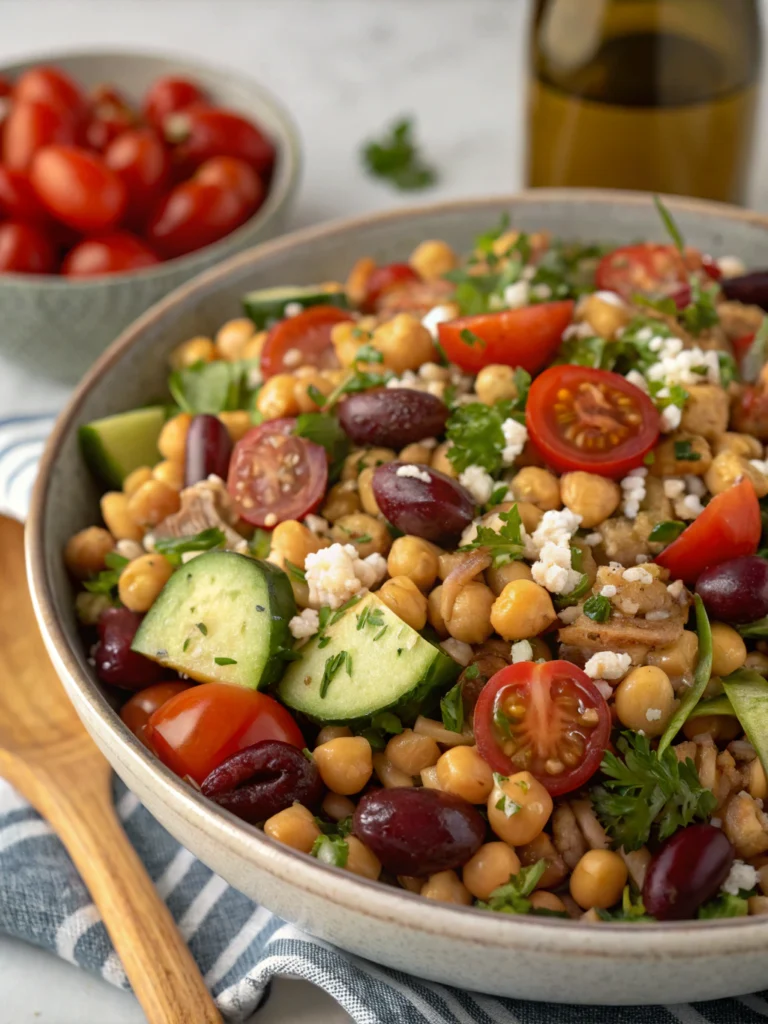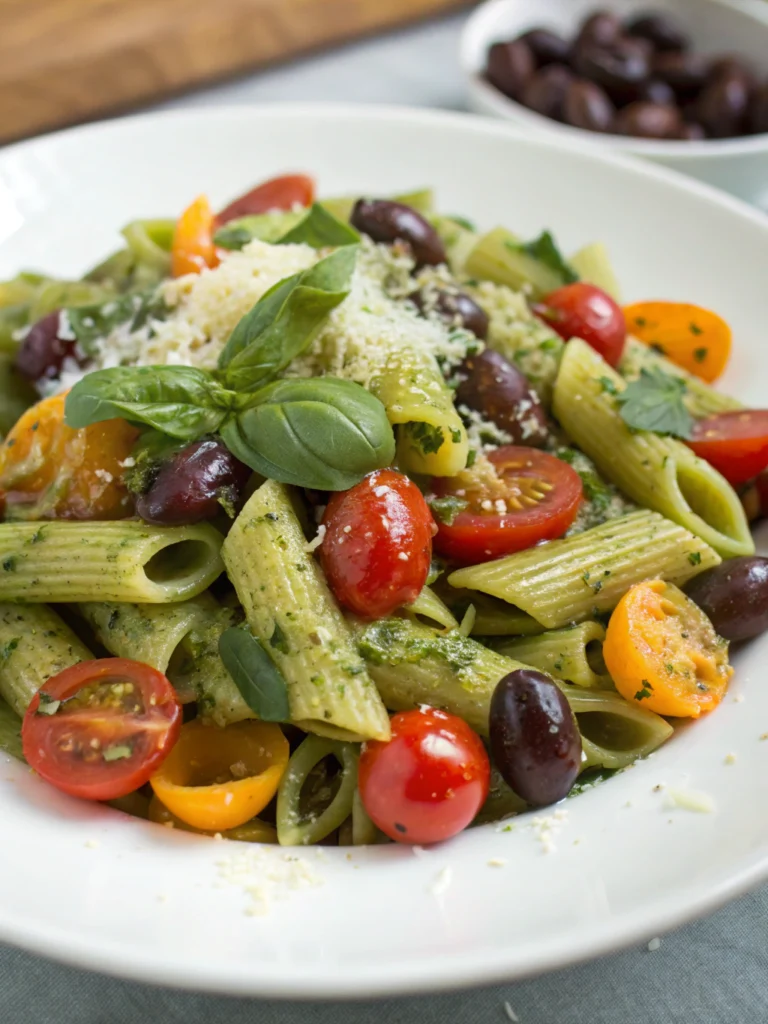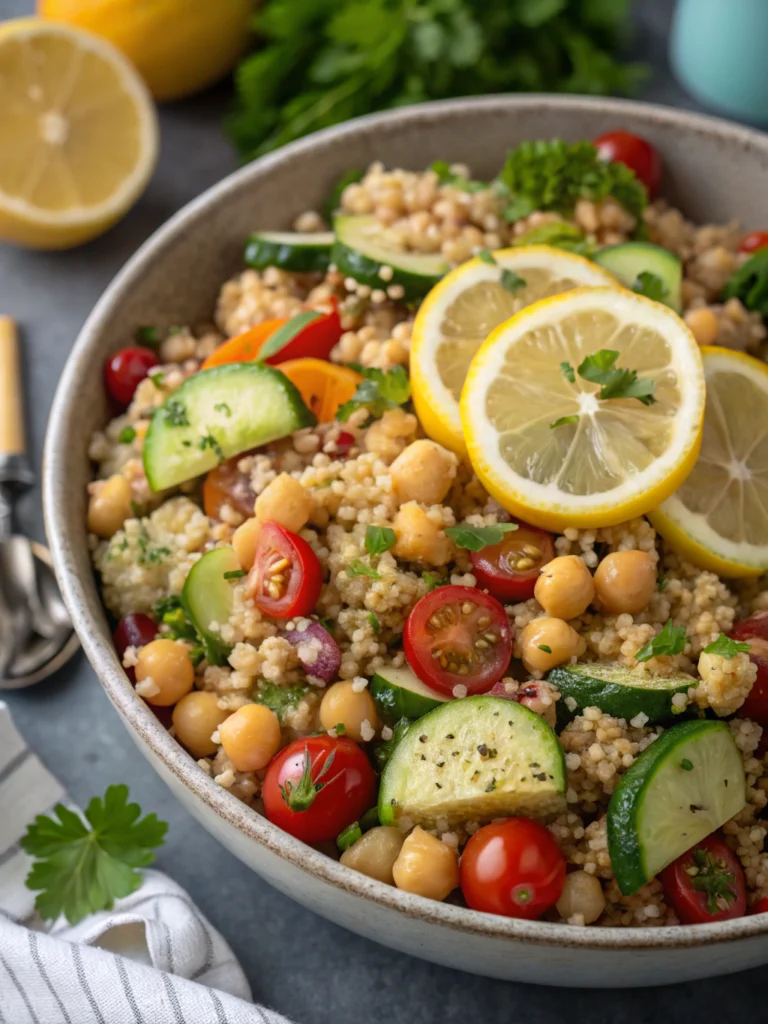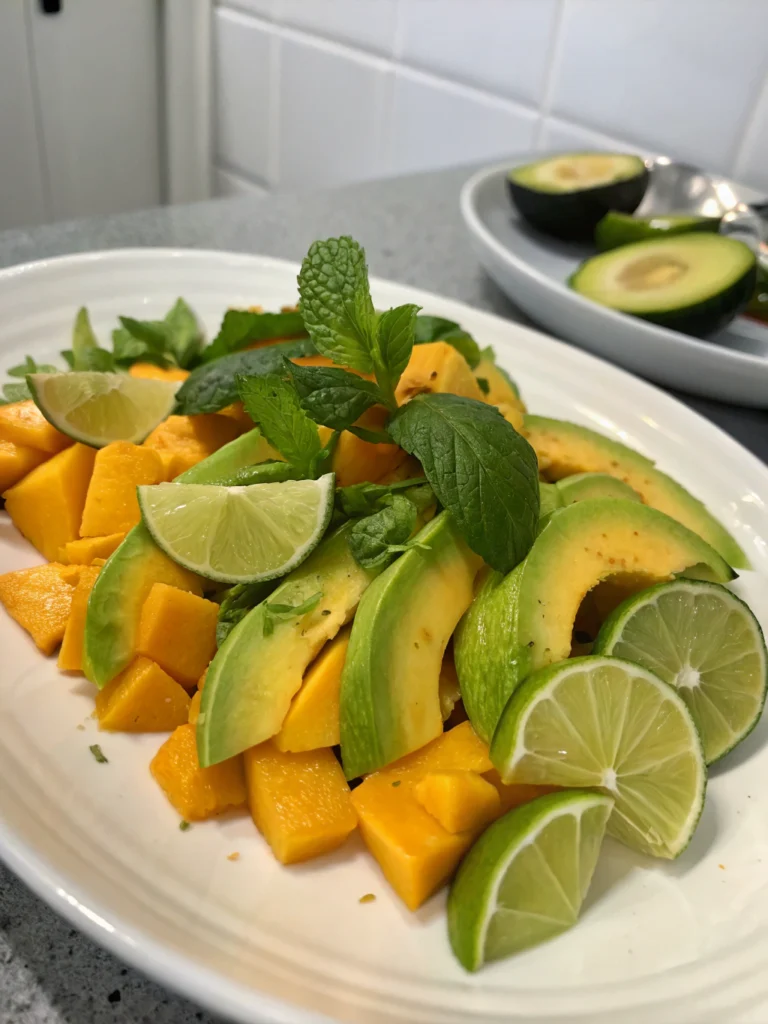Garlic Parmesan Pasta
A simple yet indulgent pasta dish featuring perfectly cooked al dente pasta tossed in a silky sauce of fresh garlic, butter, heavy cream, and high-quality Parmesan cheese. Ready in just 20 minutes, this restaurant-quality comfort food requires minimal ingredients for maximum flavor.
Easy Garlic Parmesan Pasta Recipe
There’s something magical about the combination of garlic and Parmesan that transforms simple ingredients into a luxurious dining experience. This homemade Garlic Parmesan Pasta has been my go-to recipe for years, whether I’m hosting an impromptu dinner party or craving a comforting meal on a chilly autumn evening. The beauty of this dish lies in its simplicity – just a handful of quality ingredients coming together to create something truly extraordinary.
While many pasta recipes feel heavy or overly complex, this Garlic Parmesan Pasta finds the perfect balance between rich creaminess and light, clean flavors. Dating back to traditional Italian cooking, this recipe honors the philosophy that quality ingredients need minimal manipulation to shine.
THIS RECIPE:
- Ready in just 20 minutes from start to finish
- Uses pantry staples you likely already have on hand
- Creates a silky, luscious sauce without being heavy
- Serves as a perfect base for adding protein or vegetables
| Recipe Details | Information |
|---|---|
| Prep Time | 5 minutes |
| Cook Time | 15 minutes |
| Total Time | 20 minutes |
| Servings | 4 portions |
| Yield | Approximately 6 cups |
What makes this Garlic Parmesan Pasta recipe particularly appealing is its versatility. The silky, aromatic sauce clings beautifully to any pasta shape, from long strands of linguine to ridged penne that capture pockets of creamy goodness. Perfect for busy weeknights yet elegant enough for entertaining, this recipe strikes that elusive balance between effortless and impressive.
Ingredients for Garlic Parmesan Pasta
The soul of any great Garlic Parmesan Pasta lies in the quality of its components. Since this recipe features relatively few ingredients, each one plays a crucial role in the final flavor profile. Whenever possible, opt for fresh garlic instead of pre-minced varieties, and always choose authentic Parmigiano-Reggiano cheese that you grate yourself just before using.
For the Pasta:
- 12 ounces (340g) pasta (fettuccine, linguine, or penne work beautifully)
- 1 teaspoon salt (for pasta water)
For the Garlic Parmesan Sauce:
- 4 tablespoons (56g) unsalted butter
- 6 cloves garlic, minced (about 2 tablespoons)
- 1 cup (237ml) heavy cream
- 1 cup (100g) freshly grated Parmesan cheese
- ¼ teaspoon freshly ground black pepper
- ¼ teaspoon red pepper flakes (optional)
- 2 tablespoons fresh parsley, chopped (for garnish)
- Salt to taste
For Optional Mix-ins:
- Grilled chicken breast, sliced (8 ounces)
- Sautéed shrimp (8 ounces)
- Roasted cherry tomatoes (1 cup)
- Steamed broccoli florets (1 cup)
| Ingredient Category | Recommended Quantity | Quality Tips |
|---|---|---|
| Pasta | 12 oz (340g) | Choose bronze-die extruded pasta for better sauce adhesion |
| Garlic | 6 cloves | Look for firm bulbs with tight skin; avoid sprouted cloves |
| Parmesan | 1 cup freshly grated | Use only authentic Parmigiano-Reggiano with “DOP” seal |
| Heavy Cream | 1 cup | Opt for cream with at least 36% fat content for proper thickening |
| Butter | 4 tablespoons | European-style cultured butter provides more flavor depth |
How to Make Garlic Parmesan Pasta
Creating the perfect Garlic Parmesan Pasta is all about timing and technique. The key is to develop flavor in layers – first by gently sautéing the garlic in butter until fragrant, then building a silky sauce that coats each strand of pasta without becoming gummy or separating. Working quickly once your pasta is cooked ensures the final dish has that restaurant-quality texture that’s both creamy and light.
Prepare your pasta water
- Fill a large pot with 4 quarts of water.
- Add 1 tablespoon of salt to the water and bring to a rolling boil.
- Add pasta and cook according to package directions until al dente (usually 8-10 minutes).
- Reserve 1 cup of pasta cooking water before draining.
Create the garlic base
- While pasta cooks, melt butter in a large skillet over medium-low heat.
- Add minced garlic and cook for 1-2 minutes until fragrant but not browned.
- If using red pepper flakes, add them now to infuse the butter.
Build the sauce
- Pour in heavy cream and bring to a gentle simmer.
- Reduce heat to low and simmer for 2-3 minutes until slightly thickened.
- Gradually whisk in the grated Parmesan cheese until melted and smooth.
- Season with black pepper and salt to taste.
Combine pasta and sauce
- Add drained pasta directly to the sauce.
- Toss gently with tongs to coat evenly, adding splashes of reserved pasta water as needed to reach desired consistency.
- Continue tossing for about 1 minute to allow pasta to absorb some sauce.
Finish and serve
- Remove from heat once pasta is thoroughly coated and sauce clings to each strand.
- Garnish with chopped parsley and additional grated Parmesan if desired.
- Serve immediately in warmed bowls.
Tips for Making Garlic Parmesan Pasta
Even simple recipes benefit from expert techniques that elevate them from good to exceptional. When making Garlic Parmesan Pasta, these professional tips will help you achieve restaurant-quality results every time.
- Never rinse your pasta after cooking – the starch on the surface helps the sauce adhere perfectly
- Reserve pasta water before draining – this starchy liquid is essential for adjusting sauce consistency
- Use a microplane for grating Parmesan to achieve the perfect melt-in-your-sauce texture
- Warm your serving bowls in a low oven to keep the pasta hot longer at the table
| Technique | Recommendation | Why It Matters |
|---|---|---|
| Pasta Cooking | Cook 1 minute less than package directions | Allows pasta to finish cooking in the sauce for better flavor absorption |
| Garlic Cooking | Keep heat medium-low when sautéing | Prevents bitter burnt garlic flavor that can ruin the dish |
| Cheese Addition | Add cheese off-heat in batches | Prevents clumping and ensures smooth sauce integration |
| Final Tossing | Use tongs and a gentle lifting motion | Creates the perfect sauce-to-pasta ratio throughout the dish |
Pro tip: The secret to silky smooth Garlic Parmesan sauce is temperature control. If your sauce is too hot when adding cheese, it can separate and become grainy. If it’s too cool, the cheese won’t melt properly. Aim for just below simmering temperature for perfect results every time.
Make-Ahead Instructions
While Garlic Parmesan Pasta is best enjoyed fresh, you can prepare certain components ahead of time to streamline the cooking process when you’re ready to serve.
For the garlic butter base, melt butter with minced garlic in a skillet until fragrant, then transfer to an airtight container and refrigerate for up to 2 days. This infused butter will develop even deeper flavor as it sits. When ready to use, simply warm in a skillet before continuing with the recipe.
You can also pre-cook your pasta up to 1 day in advance. Cook until slightly firmer than al dente, toss with a small amount of olive oil to prevent sticking, and refrigerate in an airtight container. When ready to finish the dish, briefly reheat the pasta in boiling water for 30 seconds to restore its texture before adding to the sauce.
For maximum efficiency, pre-measure and prepare all ingredients by grating cheese, chopping herbs, and portioning other components. Store each prepared ingredient separately in the refrigerator for up to 24 hours before combining.
Storing Leftovers
Properly stored Garlic Parmesan Pasta can maintain its quality for several days, allowing you to enjoy this delicious dish more than once.
Transfer cooled leftover pasta to an airtight container within two hours of cooking to maintain food safety. The cream-based sauce can separate slightly in the refrigerator, but this won’t affect the flavor when reheated properly. Refrigerate leftovers for up to 3 days for optimal quality.
When reheating, add a splash of milk or cream to restore the sauce’s silky texture. For best results, warm the pasta gently in a skillet over medium-low heat, stirring frequently. Alternatively, microwave in 30-second intervals at 70% power, stirring between each interval until heated through. This gradual reheating prevents the sauce from breaking and the pasta from becoming tough.
Pro tip: The flavor of garlic may intensify during storage, so you might want to add a sprinkle of freshly grated Parmesan when reheating to balance the flavors.
Freezing Garlic Parmesan Pasta
While cream-based pasta dishes aren’t typically ideal for freezing, you can freeze Garlic Parmesan Pasta with some adjustments to maintain quality upon reheating.
For best results, slightly undercook the pasta before freezing, as it will soften further during the reheating process. Allow the prepared pasta to cool completely, then portion it into freezer-safe containers or heavy-duty freezer bags. For individual servings, freeze portions on a parchment-lined baking sheet until solid, then transfer to freezer bags. Press out excess air before sealing to prevent freezer burn.
Frozen Garlic Parmesan Pasta maintains best quality for up to 1 month. To thaw, transfer from freezer to refrigerator overnight. When ready to reheat, place in a skillet over low heat with a splash of cream or milk, stirring gently until heated through. The sauce may appear slightly separated at first but will recombine with gentle heating and stirring.
Serving Suggestions
Elevate your Garlic Parmesan Pasta from a simple dish to a complete meal with these thoughtful pairings and presentation ideas.
For a light lunch or dinner, serve the pasta alongside a crisp arugula salad dressed with lemon vinaigrette – the peppery greens and bright acidity provide perfect contrast to the rich, creamy pasta. For heartier appetites, add protein such as grilled chicken, sautéed shrimp, or roasted salmon.
Vegetable additions that complement the garlic and Parmesan flavors include roasted cherry tomatoes, sautéed mushrooms, or blanched asparagus. Simply toss these into the pasta just before serving to maintain their texture and vibrant color.
When it comes to beverages, this dish pairs beautifully with crisp white wines like Pinot Grigio or unoaked Chardonnay. For non-alcoholic options, sparkling water with a squeeze of lemon provides refreshing contrast.
Serve this pasta immediately after tossing with the sauce, as it will thicken upon standing. Present in warmed, shallow bowls with a final dusting of freshly grated Parmesan and a twist of black pepper for an elegant finishing touch.
FAQ
Can I use pre-grated Parmesan cheese for this recipe?
While convenient, pre-grated Parmesan contains anti-caking agents that can prevent proper melting and affect sauce texture. For best results, purchase a block of Parmigiano-Reggiano and grate it fresh using a microplane or fine grater. The difference in flavor and texture is remarkable and worth the extra minute of preparation.
What can I substitute for heavy cream in Garlic Parmesan Pasta?
For a lighter version, half-and-half can work, though the sauce will be thinner. Another option is to use ¾ cup whole milk mixed with ¼ cup mascarpone or cream cheese for richness. Avoid non-dairy substitutes in this particular recipe, as they won’t achieve the same silky texture or properly incorporate the cheese.
My sauce separated and looks grainy. What went wrong?
Sauce separation typically happens when the heat is too high when adding cheese or when using pre-grated cheese with anti-caking agents. To fix a broken sauce, remove from heat immediately and whisk in a tablespoon of cold cream. For prevention, always add cheese off-heat and gradually while continuously stirring.
Can I make this recipe gluten-free?
Absolutely! Simply substitute your favorite gluten-free pasta. Cook according to package directions, but be especially careful not to overcook as gluten-free varieties can become mushy quickly. The sauce ingredients (butter, garlic, cream, and pure Parmesan) are naturally gluten-free, but always check cheese labels to ensure no additives contain gluten.
How can I add more flavor to my Garlic Parmesan Pasta?
For deeper flavor dimensions, try adding 1-2 teaspoons of Italian herbs (oregano, basil, thyme), a tablespoon of fresh lemon zest, or a splash of white wine to the sauce. For umami enhancement, add 1 teaspoon of miso paste or a few oil-packed sun-dried tomatoes, finely chopped. These additions complement the garlic and Parmesan without overwhelming them.

